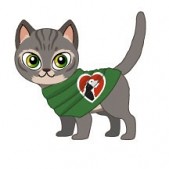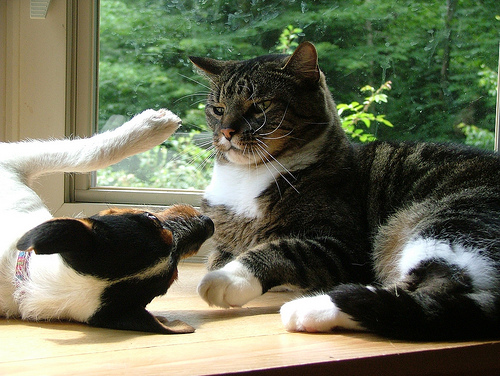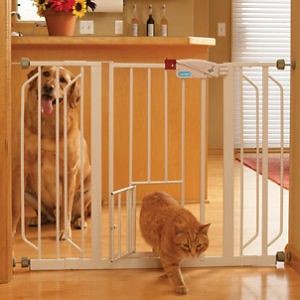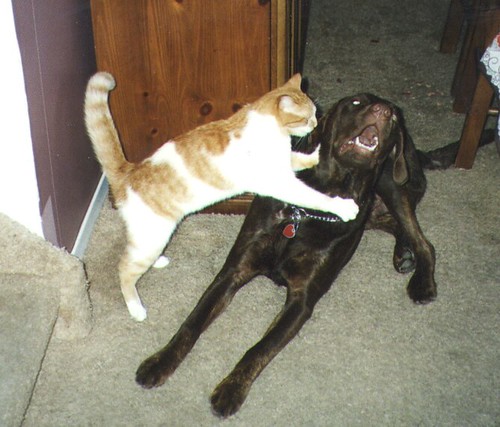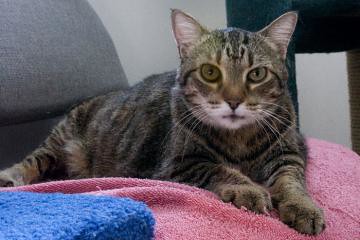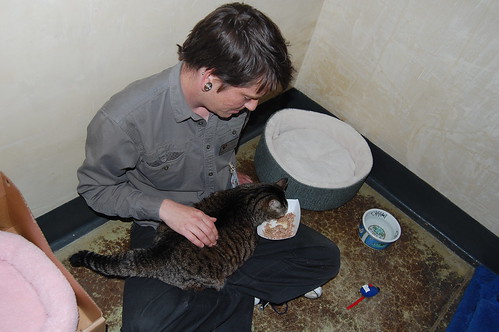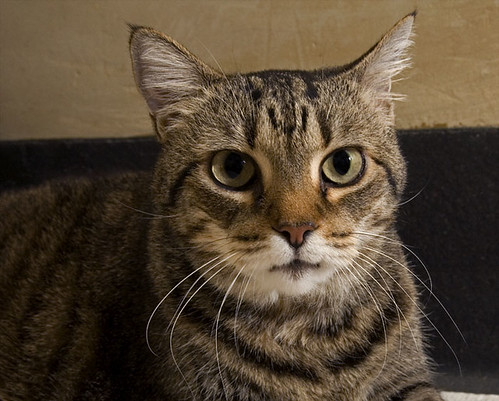By Daniel Quagliozzi
One of the things that I find truly fascinating about cats is there keen ability to train human beings to do their bidding, no matter how inconvenient the task may be. We go to all sorts of lengths to keep our cats happy, eating, drinking and using their litter boxes, even if it means displacing ourselves in our own homes.
Cats are quirky animals. They could even be described as eccentric in their methods. Sure, human beings are particular about things too, but cats seem to boggle the mind when it comes to their likes, dislikes and habits. No one ever said that living with a cat would be easy. As long as you are trainable, a cat will have no worries at all.
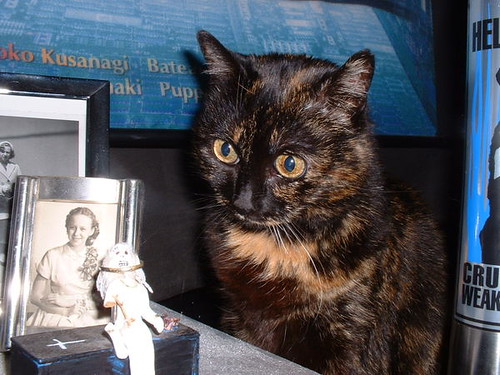
Let's use my very own Matilda for example. As a product of her old age and experience, Matilda has decided that there are certain conditions that she must have in order to get through the day. Most of these conditions happen at the our expense.
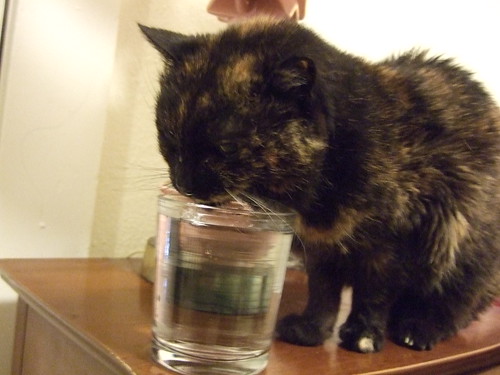
1. Matilda must have very cold water presented to her in a drinking glass, located on the night stand next to our bed. (We found this out the hard way when my wife set a glass out for herself in case she got thirsty during the night)
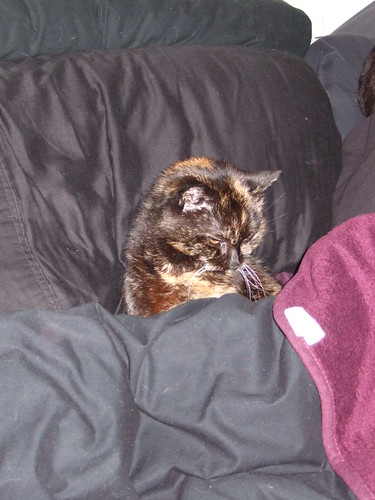
2. Matilda must sleep under the covers and on top of my chest... the moment I lay down for bed each night. This requires me to lift my comforter up so that she can spin around several times on my chest and get comfortable. Other times, she prefers to be tucked in like a human.

3. In the absence of a blanket, Matilda will attempt to crawl under my bathrobe. As you can see, this is only partly successful as there is only so much bathrobe to go around and I am wearing most of it.
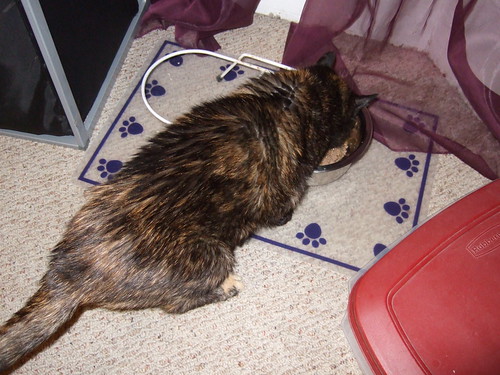
4. Matilda asks that her wet food be served exactly at 7:00 Am and 9:30 PM and will resort to trampling all over me (See:
My Alarm Clock is Hungry blog) until I finally give in to her cries for attention and her standing on my wind pipe. Her night time demands are more subtle but still effective.

5. Once the food is served, Matilda will have three or four bites of the food, walk away and make herself comfortable in the now empty master bed. She will remain in our bed until roughly 7 pm when we return home.

6. For her daily work out session, Matilda requires that a shoe lace attached to a stick be forever dangling from the same night stand she perches on for water. She has decided that she does not need us for this activity. I guess we can't be counted on.
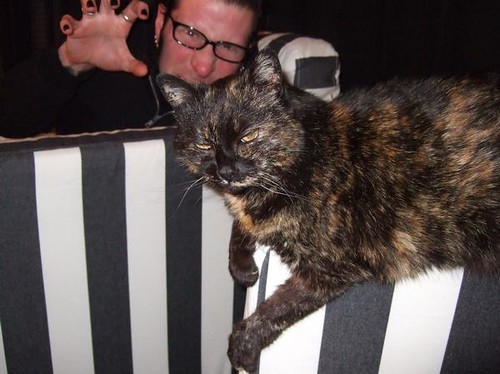
Cat guardians across the country can relate to Matilda's story. Her needs, although not that outlandish... are still her own. Some cats have color preferences, while others may like the way something feels when they lay on it. Ever wonder why a cat will choose to sit on a magazine when there are so many other places to sit? Freedom of choice is a cats prime directive. They do what they want, when they want and there's nothing you can do about it.
Have an interesting and unique story about your cat and its eccentricities? Email it to catbehavior@sfspca.org and we will post it in our upcoming blog!!
And now, a word from a guest blogger:
YOUR CAT WOULD LIKE A WORD WITH YOU
by Rod Kilpatrick
SF/SPCA Cat Volunteer
We've all said it. "Oohh, who's a pretty kitty? You're a pretty kittty! Oh, yes yes yes!"
My own cats, Gary and Sponge, finally divulged to me a closely-held feline secret: They find this kind of talk rather condescending. They'll tolerate it, if it eventually results in a treat or a belly rub. After all, cats are nothing if not realistic. They tell us what they want, what they need, what they love and what they're afraid of, and if we're smart enough to understand, they'll get what they're asking for.
Of course, cat communication is far more subtle than that. If we pay attention to their tone of voice, their body language, their ears and their eyes, we can learn a lot more about what they have to say.
But here's what's really interesting: it's a two-way street. Cats don't speak human any better than we speak cat, so they pick up the very same kinds of non-verbal cues from us that we pick up from them.
Want proof? Well, if you're lucky enough to be owned by a cat, try this. The next time you have a good day, or a bad day, or any kind of day, sit down and talk to your cat about it. Not in some kind of made-up cat language, but in your own language, whether it's English or Espanol or Francais. Exactly the way you'd say it to a human friend.
Your cat may at first look at you as if you're crazy. But keep at it. Eventually, your voice, your face and your body will automatically communicate to your cat in ways that transcend spoken language. And while you might not find answers, I guarantee you'll find at least two sympathetic ears.
So try it. Have a chat with your cat. They always get the last word anyway.
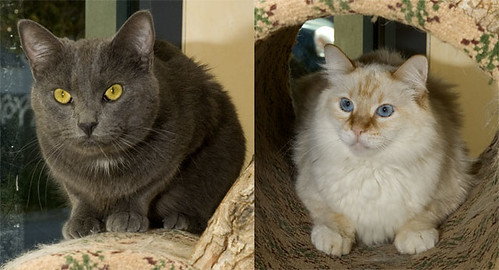

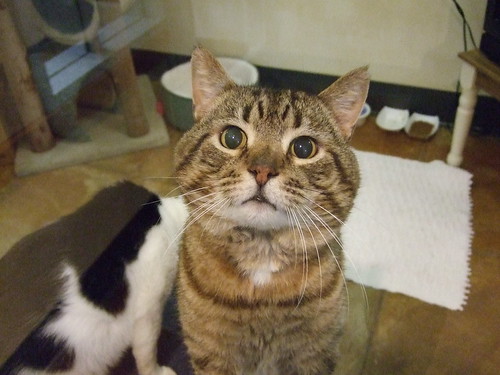
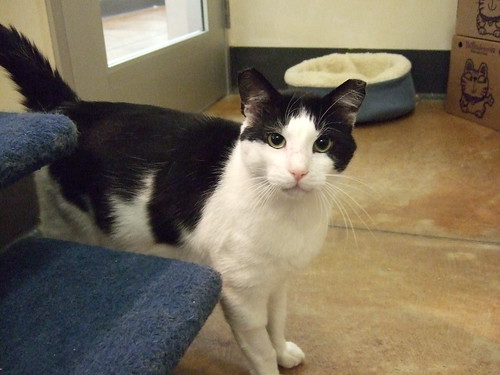



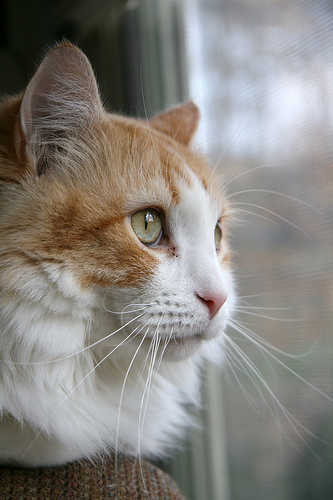
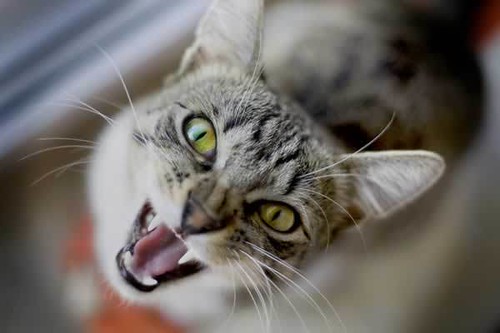
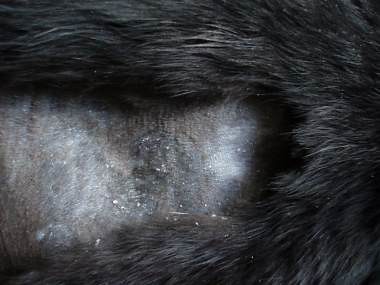
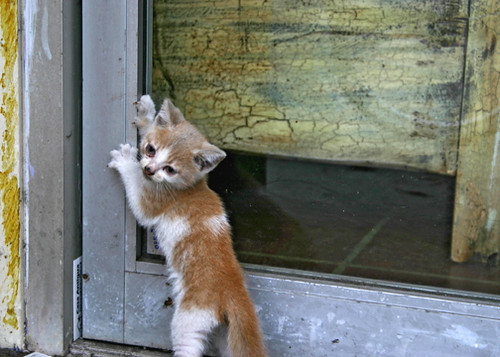
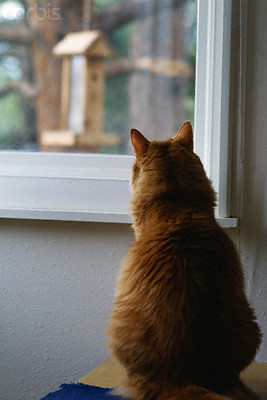
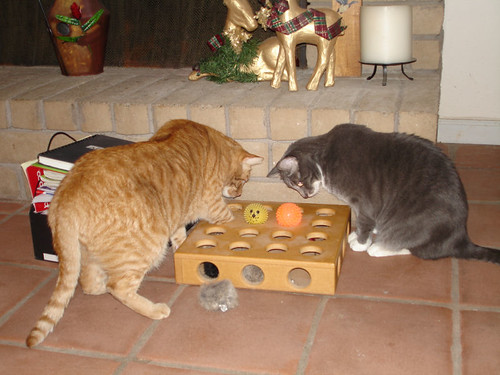
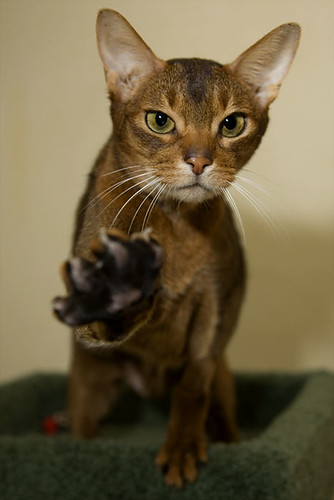


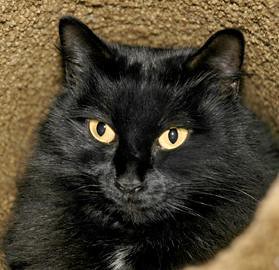

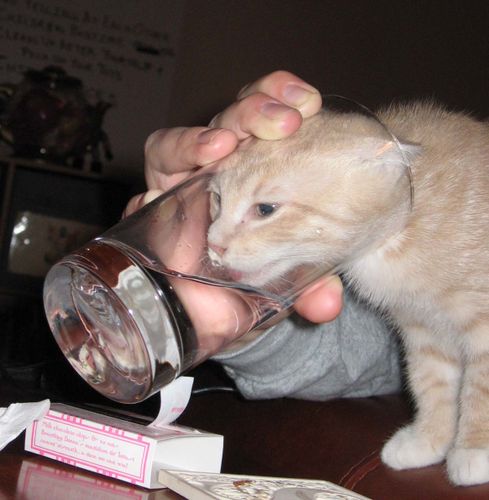
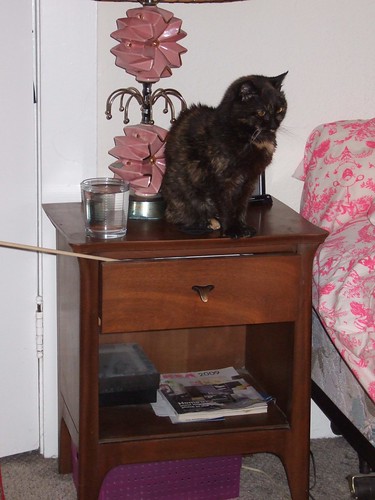
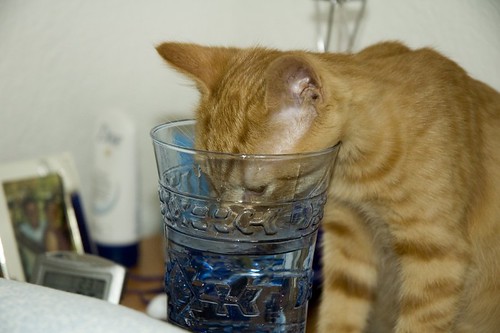
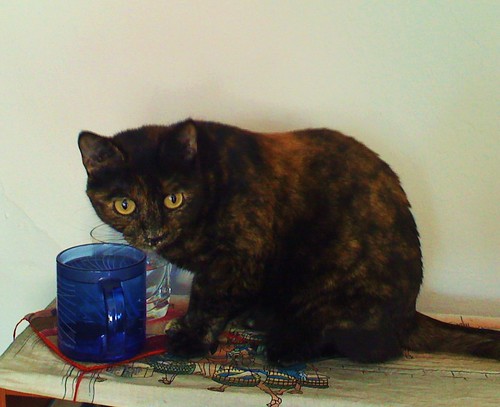
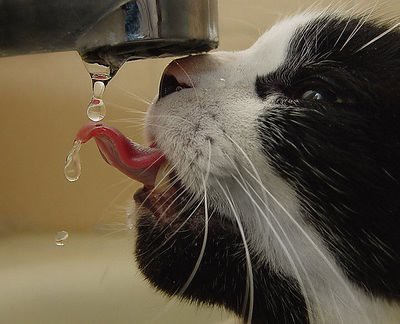

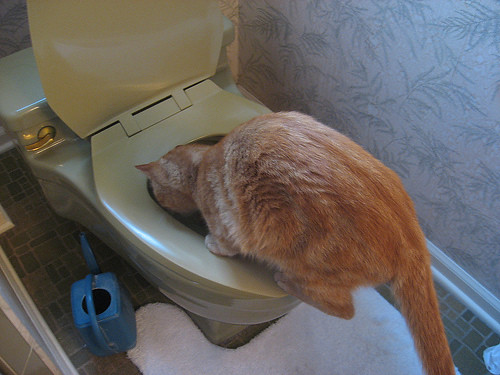

![Ralph's--cat[1]](http://farm4.static.flickr.com/3574/3516804226_30bc8634cc.jpg)
![XavierDog[1]](http://farm4.static.flickr.com/3593/3516804234_c01ab0d178.jpg)
